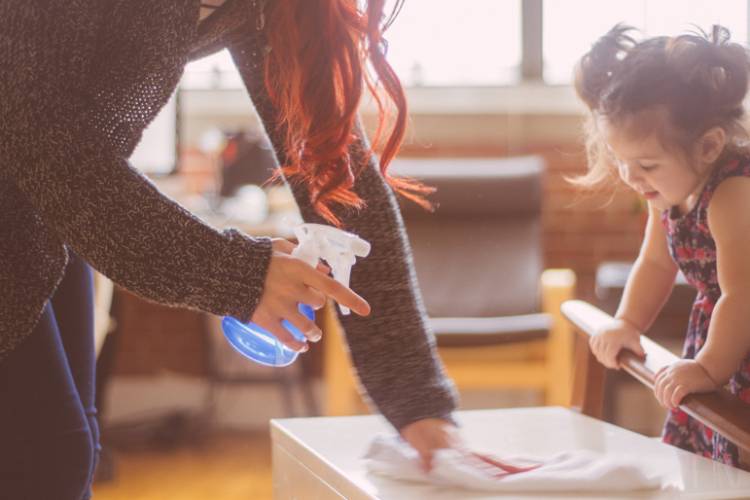Household disinfectant: bleach, ammonia and hydrochloric acid
After cleaning, your house is clean, but is it also disinfected? Whereas cleaning refers to using soapy water to remove dirt, disinfection also includes the use of specific products which remove bacteria and other germs which are harmful to your health.
TRIED AND TESTED
Share

There are cleaners which guarantee pest-free areas. Bleach, ammonia and hydrochloric acid are three of the most used products in our households. All three are characterised by their chemical composition, their strong smell and anti-bacterial “powers”.
BLEACH
What is it?
Bleach is an “activated” form of common salt. It is produced by circulating an electric current through a solution of sodium chloride. This process produces sodium hypochlorite, a very effective product for whitening or disinfecting.
Uses
Bleach is used dissolved in water for floors, worktops, and kitchen and bathroom furniture. It is used for its whitening “power” to remove resistant stains on white clothes, neat or mixed with detergent. In this case it is bleach specifically designed for washing-machines.
AMMONIA
What is it?
Also known as ammonium hydroxide, one of its main uses is to remove water hardness, as it is a basic or alkaline solution, which is very useful for removing limescale.
Use
It is used as a cleaning product, always diluted in water. To clean worktops, cupboards, windows and mirrors, use a small glass of ammonia diluted in a litre of water. For carpets, rugs or upholstery, it is recommended to dilute a small glass on ammonia in a litre of water and use it with a cloth to scrub the surface.

HYDROCHLORIC ACID
If there are children, elderly or ill people or pets in the household, the health risks from lack of disinfection are higher, and therefore greater precautions are needed. It is a good idea to wash your hands between tasks to avoid transferring germs from one space to another.
If there are children, elderly or ill people or pets in the household, the health risks from lack of disinfection are higher, and therefore greater precautions are needed. It is a good idea to wash your hands between tasks to avoid transferring germs from one space to another.
COMMON MISTAKES
• Filling up other containers with this product.
• Approximate use.
• Use in small, enclosed spaces without windows.
• Storing the product in thesame place as food.
• Mixing with other products.
• Using directly on the skin.
• Eating or smoking while handling the product.
RECOMMENDATIONS
• Keep each product in its original container.
• Read the label and follow the instructions carefully
• The room must be well ventilated. To mask the smell, you can use perfumed versions.
• Store in a specific place, out of the reach of children.
• Dilute only in water, always following the instructions of the container.
• Use gloves and/or the indicated protective wear.
• Their use requires exclusive attention.






